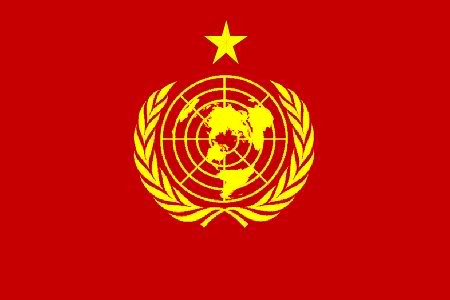kokonohp
Pioneer
Posts : 47
Join date : 2010-10-31
 |  Subject: North Road, Bank Street, and Old Trafford Subject: North Road, Bank Street, and Old Trafford  Sun Nov 14, 2010 3:26 am Sun Nov 14, 2010 3:26 am | |
| Newton Heath initially played on a field on North Road, close to the railway yard; the original capacity was about 12,000, but club officials deemed the facilities inadequate for a club hoping to join The Football League.[65] Some expansion took place in 1887, and in 1891 Newton Heath used its minimal financial reserves to purchase two grandstands, each able to hold 1,000 spectators.[66] Although attendances were not recorded for many of the earliest matches at North Road, the highest documented attendance was approximately 15,000 for a First Division match against Sunderland on 4 March 1893.[67] A similar attendance was also recorded for a friendly match against Gorton Villa on 5 September 1889.[68] In June 1893, after the club was evicted from North Road by its owners, Manchester Deans and Canons, who felt it was inappropriate for the club to charge an entry fee to the ground, secretary A. H. Albut procured the use of the Bank Street ground in Clayton.[69] It initially had no stands, by the start of the 1893–94 season, two had been built; one spanning the full length of the pitch on one side and the other behind the goal at the "Bradford end". At the opposite end, the "Clayton end", the ground had been "built up, thousands thus being provided for".[69] Newton Heath's first league match at Bank Street was played against Burnley on 1 September 1893, when 10,000 people saw Alf Farman score a hat-trick, Newton Heath's only goals in a 3–2 win. The remaining stands were completed for the following league game against Nottingham Forest three weeks later.[69] In October 1895, before the visit of Manchester City, the club purchased a 2,000-capacity stand from the Broughton Rangers rugby league club, and put up another stand on the "reserved side" (as distinct from the "popular side"). However, weather restricted the attendance for the Manchester City match to just 12,000.[70] When the Bank Street ground was temporarily closed by bailiffs in 1902, club captain Harry Stafford raised enough money to pay for the club's next away game at Bristol City and found a temporary ground at Harpurhey for the next reserves game against Padiham.[71] Following financial investment, new club president J.H. Davies paid £500 for the erection of a new 1,000-seat stand at Bank Street.[72] Within four years, the stadium had cover on all four sides, as well as the ability to hold approximately 50,000 spectators, some of whom could watch from the viewing gallery atop the Main Stand.[72] However, following Manchester United's first league title in 1908 and the FA Cup a year later, it was decided that Bank Street was too restrictive for Davies' ambition;[72] in February 1909, six weeks before the club's first FA Cup title, Old Trafford was named as the home of Manchester United, following the purchase of land for around £60,000. Architect Archibald Leitch was given a budget of £30,000 for construction; original plans called for seating capacity of 100,000, though budget constraints forced a revision to 77,000. The building was constructed by Messrs Brameld and Smith of Manchester. The stadium's record attendance was registered on 25 March 1939, when an FA Cup semi-final between Wolverhampton Wanderers and Grimsby Town drew 76,962 spectators.[73] Bombing in the Second World War destroyed much of the stadium; the central tunnel in the South Stand was all that remained of that quarter. After the war, the club received compensation from the War Damage Commission in the amount of £22,278. While reconstruction took place, the team played its "home" games at Manchester City's Maine Road ground; Manchester United was charged £5,000 per year, plus a nominal percentage of gate receipts.[74] Later improvements included the addition of roofs, first to the Stretford End and then to the North and East Stands. The roofs were supported by pillars that obstructed many fans' views, and they were eventually replaced with a cantilevered structure. The Stretford End was the last stand to receive a cantilevered roof, completed in time for the 1993–94 season.[31] First used on 25 March 1957 and costing £40,000, four 180-foot (55 m) pylons were erected, each housing 54 individual floodlights. These were dismantled in 1987 and replaced by a lighting system embedded in the roof of each stand, which remains in use today.[75] The Taylor Report's requirement for an all-seater stadium lowered capacity at Old Trafford to around 44,000 by 1993. In 1995, the North Stand was redeveloped into three tiers, restoring capacity to approximately 55,000. At the end of the 1998–99 season, second tiers were added to the East and West Stands, raising capacity to around 67,000, and between July 2005 and May 2006, 8,000 more seats were added via second tiers in the north-west and north-east quadrants. Part of the new seating was used for the first time on 26 March 2006, when an attendance of 69,070 became a new Premier League record.[76] The record was pushed steadily upwards before reaching its peak on 31 March 2007, when 76,098 spectators saw Manchester United beat Blackburn Rovers 4–1, with just 114 seats (0.15 percent of the total capacity of 76,212) unoccupied.[77] In 2009, reorganisation of the seating resulted in a reduction of capacity by 255 to 75,957. petzlifeget a job | |
|
